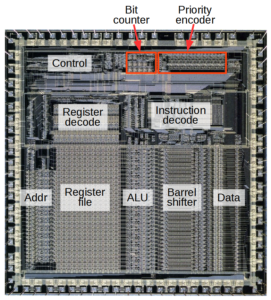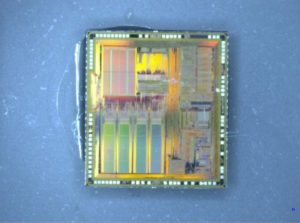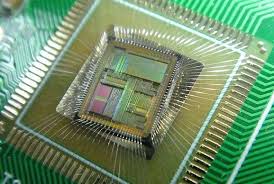Crack IC PIC18F6680 Heximal
Crack IC PIC18F6680 and disable the security fuse bit, unlock the program and data from its flash and eeprom, the file format will be in Heximal or binary;
Alternate assignment for CCP2 in all operating modes except Microcontroller – applies to PIC18F8X8X only.
Default assignment when CCP2MX is set.
External memory interface functions are only available on PIC18F8X8X devices.
CCP2 is multiplexed with this pin by default when configured in Microcontroller mode; otherwise, it is multiplexed with either RB3 or RC1.
PORTH and PORTJ are only available on PIC18F8X8X (80-pin) devices.
PSP is available in Microcontroller mode only.
On PIC18F8X8X devices, these pins can be multiplexed with RH7/RH6 by changing the ECCPMX configuration bit.
For timing insensitive applications, the “RC” and “RCIO” device options offer additional cost savings.
The RC oscillator frequency is a function of the supply voltage, the resistor (REXT) and capacitor (CEXT) values and the operating temperature. In addition to this, the oscillator frequency will vary from unit to unit, due to normal process parameter variation. Furthermore, the difference in lead frame capacitance between package types will also affect the oscillation frequency, especially for low CEXT values. The user also needs to take into account variation due to tolerance of external R and C components used.
In the RC Oscillator mode, the oscillator frequency divided by 4 is available on the OSC2 pin. This signal may be used for test purposes or to synchronize other logic to faciliate the process of MCU Program recovering. The RCIO Oscillator mode functions like the RC mode except that the OSC2 pin becomes an additional general purpose I/O pin. The I/O pin becomes bit 6 of PORTA (RA6).
The EC, ECIO, EC+PLL and EC+SPLL Oscillator modes require an external clock source to be connected to the OSC1 pin. The feedback device between OSC1 and OSC2 is turned off in these modes to save current. There is a maximum 1.5 µs start-up required after a Power-on Reset, or wake-up from Sleep mode.
In the EC Oscillator mode, the oscillator frequency divided by 4 is available on the OSC2 pin. This signal may be used for test purposes or to synchronize other logic. Figure 2-4 shows the pin connections for the EC Oscillator mode.
The ECIO Oscillator mode functions like the EC mode, except that the OSC2 pin becomes an additional general purpose I/O pin. The I/O pin becomes bit 6 of PORTA (RA6). Figure 2-5 shows the pin connections for the ECIO Oscillator mode.
A Phase Locked Loop circuit is provided as a programmable option for users that want to multiply the frequency of the incoming oscillator signal by 4. For an input clock frequency of 10 MHz, the internal clock frequency will be multiplied to 40 MHz. This is useful for customers who are concerned with EMI due to high-frequency crystals.
Tags: crack ic locked archive,crack ic locked code,crack ic locked content,crack ic locked data,crack ic locked eeprom,crack ic locked file,crack ic locked firmware,crack ic locked information,crack ic locked memory,crack ic locked program





